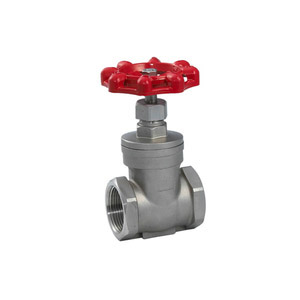Ensuring Reliability: How the Design of Screwed Gate Valves Achieves Superior Sealing and Minimal Leakage
2024-06-13
In fluid control systems, achieving reliable sealing and minimizing leakage are critical for maintaining efficiency and safety. Screwed gate valves are specifically designed to meet these demands, providing effective flow control and secure sealing in various applications. This blog explores how the design of a screwed gate valve ensures reliable sealing and minimal leakage, making it a preferred choice in many industries.
Understanding Screwed Gate Valves
Screwed gate valves are a type of valve that uses a threaded stem to open and close a gate, or wedge, within the valve body. This mechanism allows for precise control over fluid flow, making them ideal for applications requiring a tight shut-off. The design intricacies of these valves play a crucial role in their ability to seal effectively and prevent leakage.
Key Design Features Ensuring Reliable Sealing and Minimal Leakage
1. Solid or Flexible Gate
The gate, or wedge, in a screwed gate valve can be solid or flexible. A solid gate provides a robust sealing surface that can withstand high pressures, while a flexible gate can adapt to slight misalignments and thermal expansions within the valve body. This flexibility ensures a tight seal even under varying operating conditions, reducing the risk of leakage.
2. Precision Machined Components
The precision machining of the valve's internal components is essential for achieving reliable sealing. The gate, seats, and body are meticulously machined to create smooth, matching surfaces that fit together tightly. This precision minimizes gaps and irregularities that could lead to leakage, ensuring a more secure seal when the valve is closed.
3. Threaded Stem Mechanism
The threaded stem mechanism of a screwed gate valve allows for fine control over the gate's position. As the stem is turned, the gate is precisely raised or lowered into position. This threading ensures that the gate can be tightly seated against the valve seats, creating a reliable seal. The fine threads also provide mechanical advantage, making it easier to achieve the necessary sealing force.
4. Rising and Non-Rising Stem Designs
Screwed gate valves come in both rising and non-rising stem designs. In a rising stem design, the stem visibly moves up and down as the valve is operated, allowing for easy visual indication of the valve's status. This design also helps ensure that the gate moves smoothly and seats properly, enhancing the seal. Non-rising stems, on the other hand, are beneficial in applications with space constraints, and their internal threading still ensures reliable gate movement and sealing.
5. Seat and Seal Materials
The materials used for the seats and seals in a screwed gate valve are chosen for their compatibility with the fluid and operating conditions. Common materials include metal, rubber, and various elastomers. Metal seats offer high durability and are suitable for high-pressure and high-temperature applications, while softer materials like rubber provide excellent sealing capabilities in lower-pressure systems. The choice of material ensures that the seal remains effective throughout the valve's operating life.
6. Bonnet Design
The bonnet of a screwed gate valve, which houses the stem and provides a seal for the valve body, is designed to enhance sealing and prevent leakage. The bonnet can be bolted, welded, or threaded, each offering different levels of security and ease of maintenance. A well-designed bonnet ensures that the stem and gate remain properly aligned, contributing to the overall sealing effectiveness of the valve.
7. Packing and Gaskets
Proper packing around the stem and high-quality gaskets at the body-bonnet interface are crucial for preventing leakage. Packing materials, such as PTFE or graphite, provide a seal around the stem, preventing fluid from escaping through the stem opening. Similarly, gaskets ensure that the connection between the valve body and bonnet is leak-proof, maintaining the integrity of the valve's seal.
Applications Benefiting from Screwed Gate Valve Design
1. Water and Wastewater Treatment
In water and wastewater treatment plants, reliable sealing is essential to prevent contamination and maintain system integrity. Screwed gate valves with their tight sealing capabilities are ideal for controlling the flow of clean and treated water, ensuring no leaks that could compromise water quality.
2. Oil and Gas Industry
The oil and gas industry requires valves that can withstand high pressures and harsh conditions. Screwed gate valves provide the necessary durability and reliable sealing to handle crude oil, natural gas, and other hydrocarbons, ensuring safe and efficient operation.
3. Chemical Processing
In chemical processing plants, preventing leaks is critical to avoid hazardous spills and ensure worker safety. Screwed gate valves made from corrosion-resistant materials and designed for precise sealing are well-suited to handle aggressive chemicals and maintain a leak-proof system.
4. HVAC Systems
Heating, ventilation, and air conditioning (HVAC) systems rely on screwed gate valves to control the flow of refrigerants and chilled water. The valves' ability to provide tight sealing helps maintain the efficiency of HVAC systems, preventing leaks that could reduce cooling or heating performance.
5. Power Generation
Power plants require robust and reliable valves to control the flow of steam, water, and other fluids. Screwed gate valves offer the necessary sealing and durability to operate efficiently in high-temperature and high-pressure environments, contributing to the overall reliability of the power generation process.
Conclusion
The design of screwed gate valves plays a crucial role in ensuring reliable sealing and minimal leakage across various applications. From precision machining and material selection to advanced stem mechanisms and bonnet designs, each aspect of the valve's construction is optimized for performance and durability. By providing tight and reliable seals, screwed gate valves help maintain the efficiency, safety, and integrity of fluid control systems in diverse industries, making them an indispensable component in modern engineering and industrial operations.



